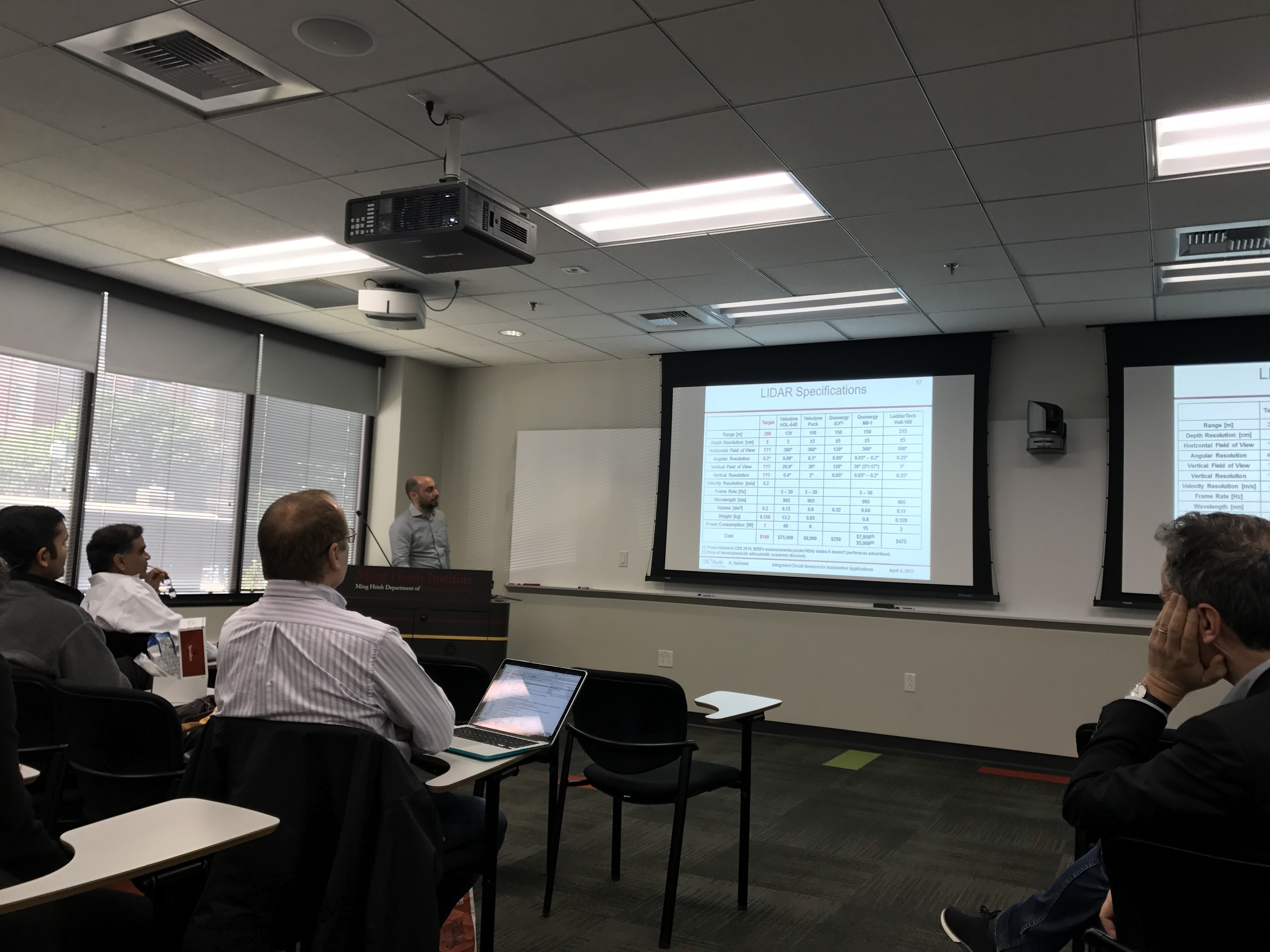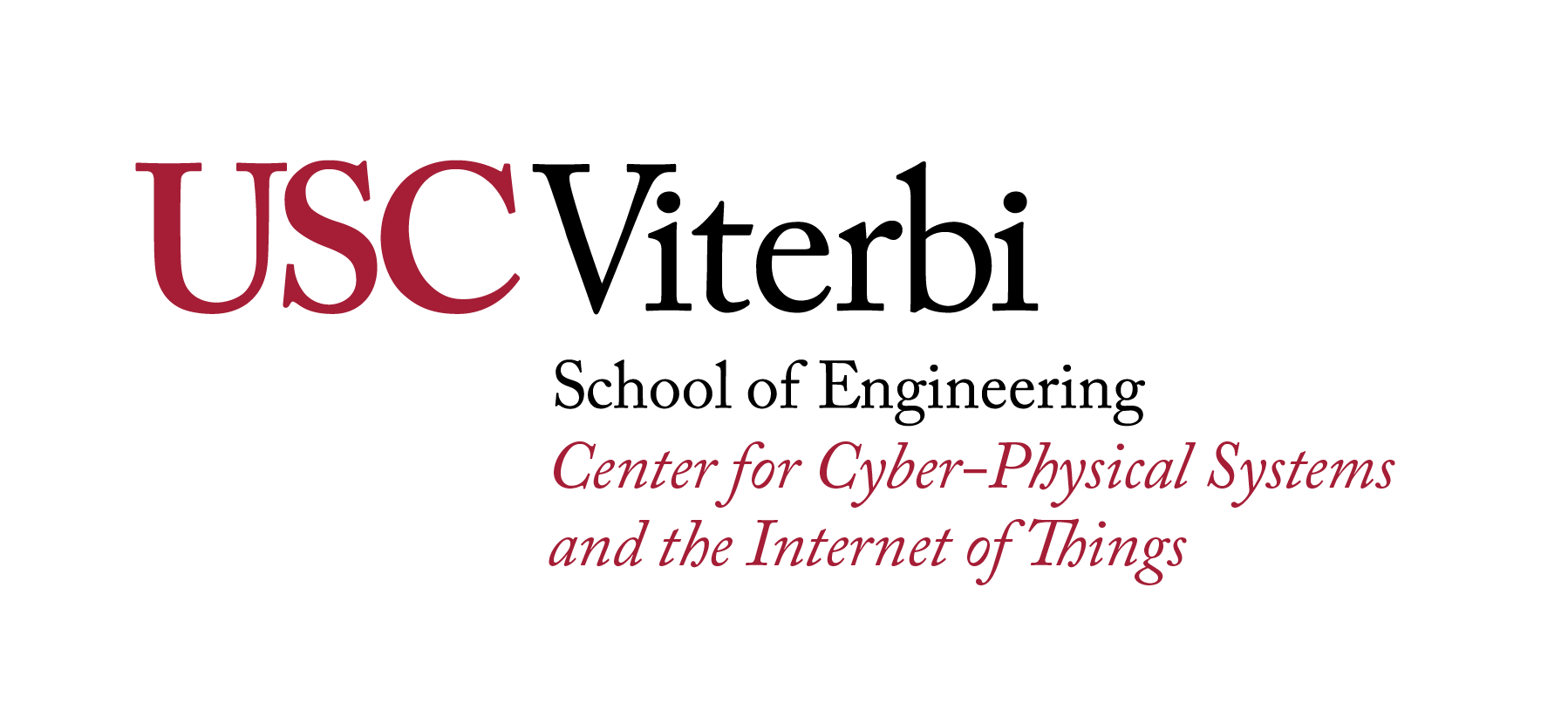CCI Mini-Workshop on Connected and Driverless Vehicles

April 7, 2017
EEB 132
8am-1pm
The goal of this meeting was for the participants (faculty and researchers at Viterbi) to give an overview of their related research in order to obtain a broad understanding of Viterbi activities and strengths in this emerging area. The following is a brief summary of the presentations from the mini-workshop in the order they were presented.
Gaurav Sukhatme (Computer Science) presented his group’s work on autonomy (calibration – a major challenge as sensors are a key component for autonomous driving, mapping, localization) and interaction (robotic coordination and networking).
Sandeep Gupta (Electrical Engineering) discussed the applicability of verification of system designs given specifications to driverless cars, given that they need an unprecedented 8-nines reliability.
Kostas Psounis (Electrical Engineering) talked about his work on wireless networks, including connected vehicles. He has worked on various aspects of this topic, including mesh networking, delay tolerant networking.
Petros Ioannou (Electrical Engineering) introduced his prior work on adaptive cruise control from the early 90’s, and talked about the fundamental challenges of human factors, safety and cost. Spoke about ways in which V2I connectivity could bring about a revolution in transportation by closing the loop with dynamical control. He also spoke about his group’s work on personalization of vehicles.
Nora Ayanian (Computer Science) presented her work on autonomy in teams of robots and aspects of multi-robot coordination including task specification, task assignment, multi-robot planning, and modeling. She also described her recent work on micro-UAV’s, mixed reality for robotics, fast planning for constrained multi-robot systems, collision avoidance, human coordination under robot-like condition.
Ugur Demiryurek (Integrated Media Systems Center) spoke about big data applied to transportation systems; four projects that IMSC is engaged in: TransDec, Travics, ClearPath, and MovIT. These include management of real-time city-wide traffic sensor data, applications used by LA fire department.
Andy Molisch (Electrical Engineering) presented remotely his experience with building and using a 8×8 MIMO channel sounder for measuring V2V and V2I channels for the 5.9GHz spectrum (allocated by FCC for vehicular communications, used by DSRC/WAVE), and some of the challenges and observations obtained.
Ketan Savla (Civil and Environmental Engineering) introduced his work on optimizing traffic, including based on micro and macro-scopic models, including queueing theory models for transportation that allow for a way to span these models. He described his work on new distributed adaptive traffic signal controllers, inspired by corresponding algorithms in communication networks.
Antonio Ortega (Electrical Engineering) presented his work on graph signal processing, which provides a way to model and process signals that are structured as a graph, including low and high pass filtering and interpolation. His work may have applications to modeling transportation data on road network graphs and vehicle-based sensing for air quality monitoring.
Mihailo Jovanovic (Electrical Engineering) discussed whether local feedback could provide robustness to external disturbances for large-traffic networks; their results show that the answer is negative for certain natural formulations. He described analysis of control systems involving vehicles, showing that rigid formations are easier to maintain in higher dimensional configurations.
Bhaskar Krishnamachari (Electrical Engineering) summarized his work on connected vehicles, including information dissemination to vehicles, vehicular sensing and computation, and networks of autonomous robots.
Mahta Moghaddam (Electrical Engineering) detailed her interest in a tomographic UAV network for ambient mapping (using radars for soil moisture sensing) and real-time autonomous field. She also discussed opportunistic sensing using signals of opportunity.
Hossein Hashemi (Electrical Engineering) talked about how low-cost sensing is a major challenge for connected vehicles, and presented the state of the art including his own group’s work on front-end analog circuits for radar and light-based sensing.
Natali Ruchansky (on behalf of Yan Liu, Computer Science) presented about the new USC center for Machine Learning (MASCLE) and her group’s work on machine learning for time-series signals and spatio-temporal signals including recent work on deep learning.
